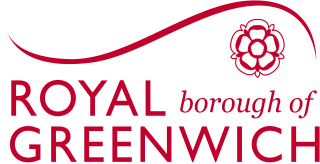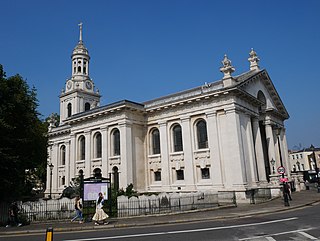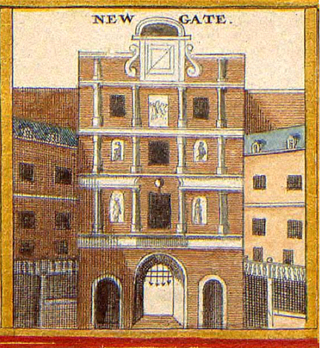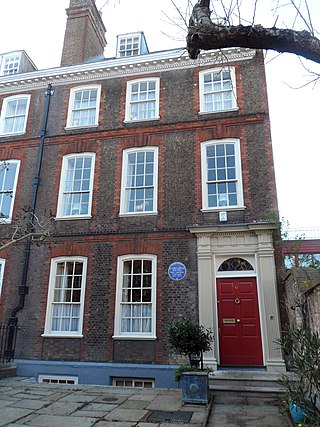
The Royal Borough of Greenwich is a London borough in southeast Greater London, England. The London Borough of Greenwich was formed in 1965 by the London Government Act 1963. The new borough covered the former area of the Metropolitan Borough of Greenwich and part of the Metropolitan Borough of Woolwich to the east. The local council is Greenwich London Borough Council which meets in Woolwich Town Hall. The council's offices are also based in Woolwich, the main urban centre in the borough.

Greenwich is a town in south-east London, England, within the ceremonial county of Greater London. It is situated 5.5 miles (8.9 km) east-south-east of Charing Cross.

Cutty Sark is a British clipper ship. Built on the River Leven, Dumbarton, Scotland in 1869 for the Jock Willis Shipping Line, she was one of the last tea clippers to be built and one of the fastest, at the end of a long period of design development for this type of vessel, which ended as steamships took over their routes. She was named after the short shirt of the fictional witch in Robert Burns' poem Tam o' Shanter, first published in 1791.

Old Street is a 1-mile (1.6 km) street in inner north-east Central London, England that runs west to east from Goswell Road in Clerkenwell, in the London Borough of Islington, via St Luke's and Old Street Roundabout, to the crossroads where it meets Shoreditch High Street (south), Kingsland Road (north) and Hackney Road (east) in Shoreditch in the London Borough of Hackney.

Greenwich station is about 400 m south-west of the district centre, in London, England. It is an interchange between National Rail between central London and Dartford, and the Docklands Light Railway (DLR) between Lewisham to the south and Docklands and the City of London. It is in Travelcard Zones 2 and 3.

The Greenwich Foot Tunnel crosses beneath the River Thames in East London, linking Greenwich on the south bank with Millwall on the north. Approximately 4,000 people use the tunnel each day. It opened in 1902.

Greenwich Park is a former hunting park in Greenwich and one of the largest single green spaces in south-east London. One of the Royal Parks of London, and the first to be enclosed, it covers 74 hectares, and is part of the Greenwich World Heritage Site. It commands views over the River Thames, the Isle of Dogs and the City of London.

St Alfege Church is an Anglican church in the centre of Greenwich, part of the Royal Borough of Greenwich in London. It is of medieval origin and was rebuilt in 1712–1714 to the designs of Nicholas Hawksmoor.

Cutty Sarkfor Maritime Greenwich is a light metro station on the Docklands Light Railway (DLR) Bank-Lewisham Line in Greenwich, south-east London, so named for its proximity to the Cutty Sark in the Maritime Greenwich district. It is the most central of the Greenwich DLR stations, being situated in Greenwich town centre.

Newgate was one of the historic seven gates of the London Wall around the City of London and one of the six which date back to Roman times. Newgate lay on the west side of the wall and the road issuing from it headed over the River Fleet to Middlesex and western England. Beginning in the 12th century, parts of the gate buildings were used as a gaol, which later developed into Newgate Prison.

Greenhithe is a village in the Borough of Dartford in Kent, England, and the civil parish of Swanscombe and Greenhithe. It is located 4 miles east of Dartford and 5 miles west of Gravesend.

Coade stone or Lithodipyra or Lithodipra is stoneware that was often described as an artificial stone in the late 18th and early 19th centuries. It was used for moulding neoclassical statues, architectural decorations and garden ornaments of the highest quality that remain virtually weatherproof today.

London Buses route 188 is a Transport for London contracted bus route in London, England. Running between North Greenwich bus station and Tottenham Court Road station, it is operated by London Central.

The A200 is an A road in London running from London Bridge to Greenwich.

National Cycle Route 1 is a route of the National Cycle Network, running from Dover to Tain. The 1,264 mi-long (2,034-kilometre) cycle-path is located in the United Kingdom.

Waterlink Way is a cyclepath and walking route in South East London. It extends from South Norwood Country Park to the Cutty Sark ship in Greenwich, a total of eight miles.

The New Zealand Memorial is an obelisk in Greenwich that commemorates 21 British officers and men of the Royal Navy who died in the New Zealand War of 1863–64. The memorial is located near the River Thames, east of the Cutty Sark, close to the Royal Naval College, Greenwich. It became a Grade II listed building in 1973.

Masbro Road is in the London Borough of Hammersmith, England. It runs from Sinclair Road in the north to Blythe Road in the south. It is joined on the west side by Fielding Road, Irving Road, Redan Street, and Springvale Terrace. It is joined on the east side by Hofland Road and crossed by Milson Road.

King William Walk is a street in central Greenwich in London. It runs northwards from the entrance to Greenwich Park along the edge of the Old Royal Naval College to the Cutty Sark and the nearby Greenwich foot tunnel. The western side of the street comprises a mixture of residential and commercial properties, with several shops, restaurants and, south of Nelson Road, two pubs. The eastern side includes the Discover Greenwich Visitor Centre and several former College buildings and open spaces today used by the University of Greenwich, including residential accommodation in Devonport House, south of Nelson Road.

Crooms Hill is a residential street in Greenwich in South East London. The street name has been described as one of the oldest in London, possibly deriving from the Celtic word 'crom', meaning crooked.






















